Abstract
Gastric haemorrhage was produced regularly in mice within 6 hours of the subcutaneous injection of a large dose (2 to 10 mg./kg.) of reserpine or of deserpidine. Rescinnamine, syrosingopine (SU-3118), and tetrabenazine (Ro 1-9569) were less active. Gastric haemorrhage was also produced within 6 hours when 5-hydroxytryptamine (10 mg./kg.) was injected every half-hour. Neither reserpine nor 5-hydroxytryptamine produced gastric haemorrhage in mice which had been vagotomized by tying the oesophagus at the cardio-oesophageal junction or which had been pre-treated with iproniazid. Amphetamine was less effective than iproniazid in preventing gastric haemorrhage after reserpine, and the following drugs were ineffective: cocaine, methyl phenidate (Ritalin), amarin, caffeine, nikethamide, lysergic acid diethylamide and its 2-bromo derivative (BOL148). Gastric haemorrhage was not observed in mice which had been given substantial doses of atropine or of hexamethonium before reserpine. The incidence of haemorrhage was substantially reduced by treatment with an antacid mixture. It is concluded that reserpine-like drugs cause gastric haemorrhage by a mechanism which has an important central component and which involves the liberation of 5-hydroxytryptamine.
Full text
PDF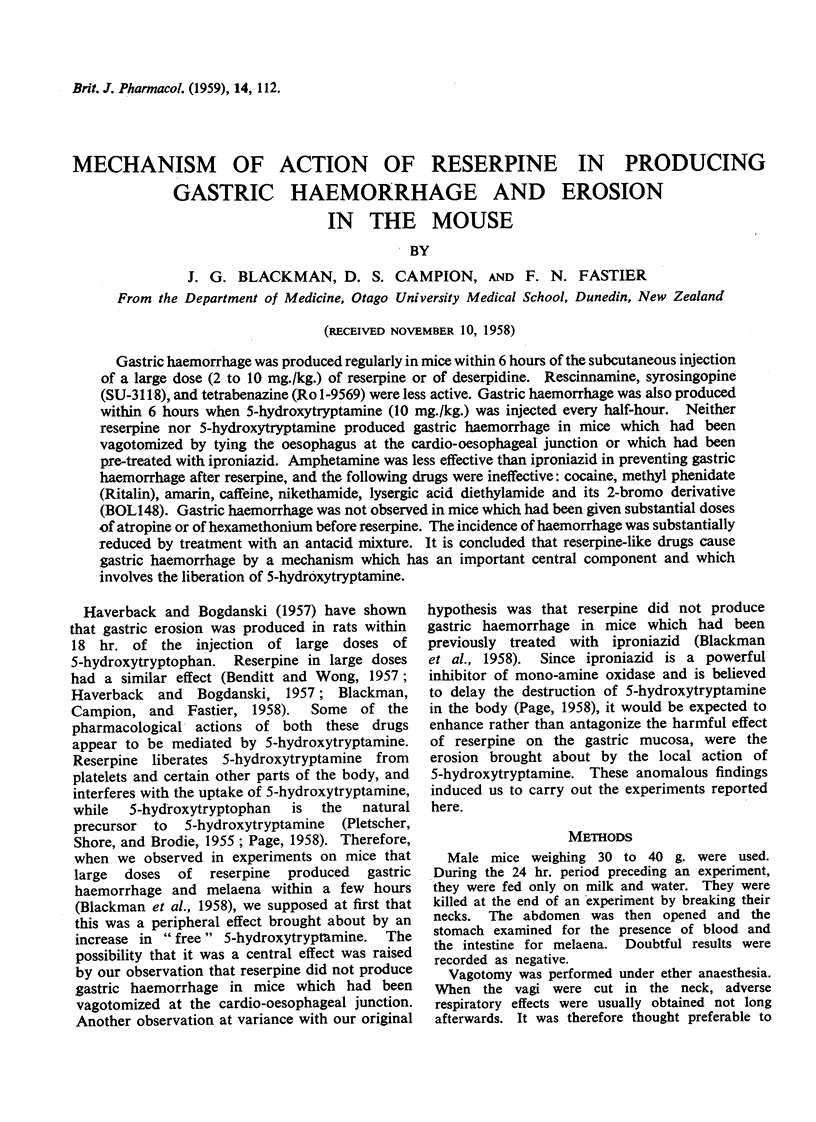
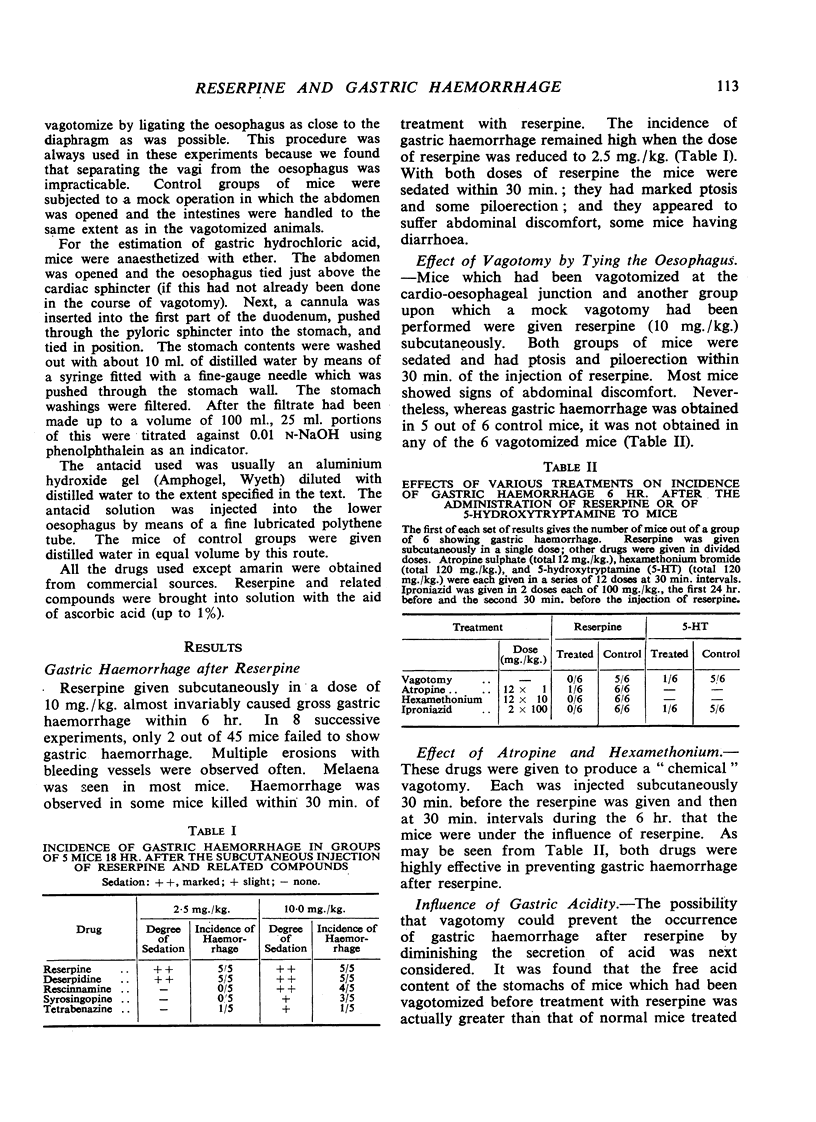
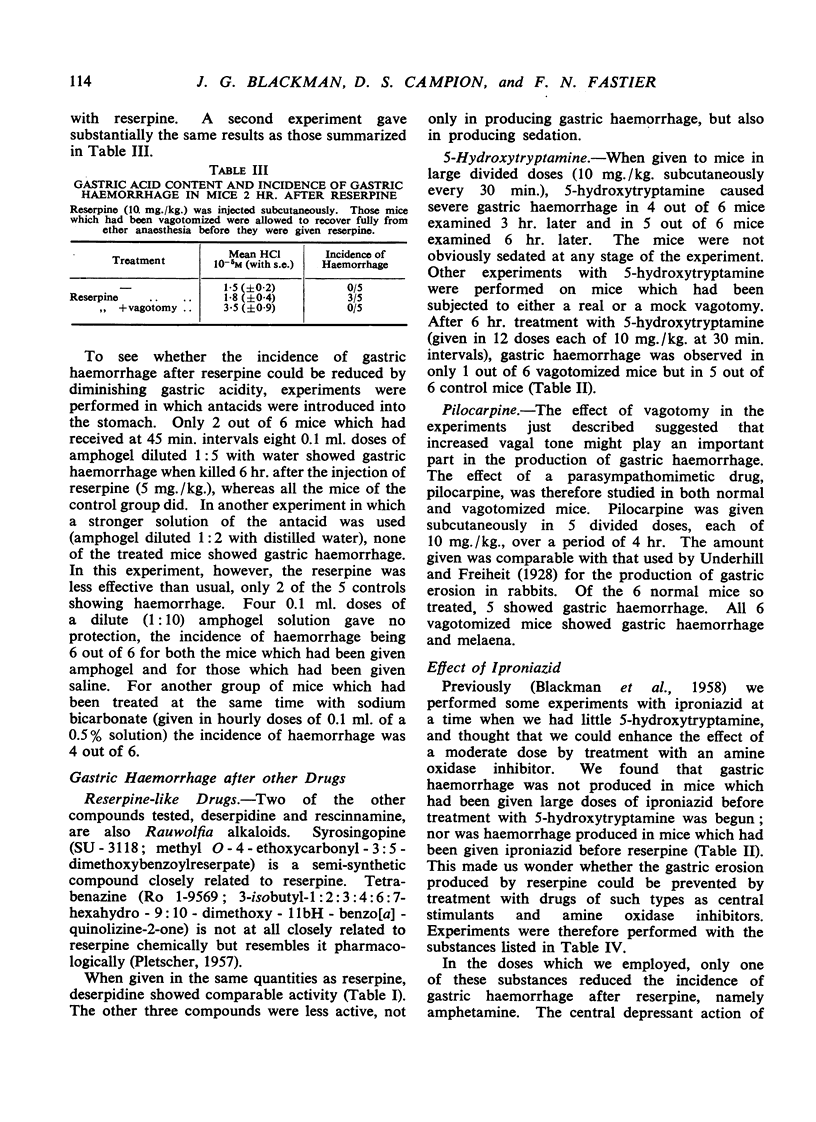
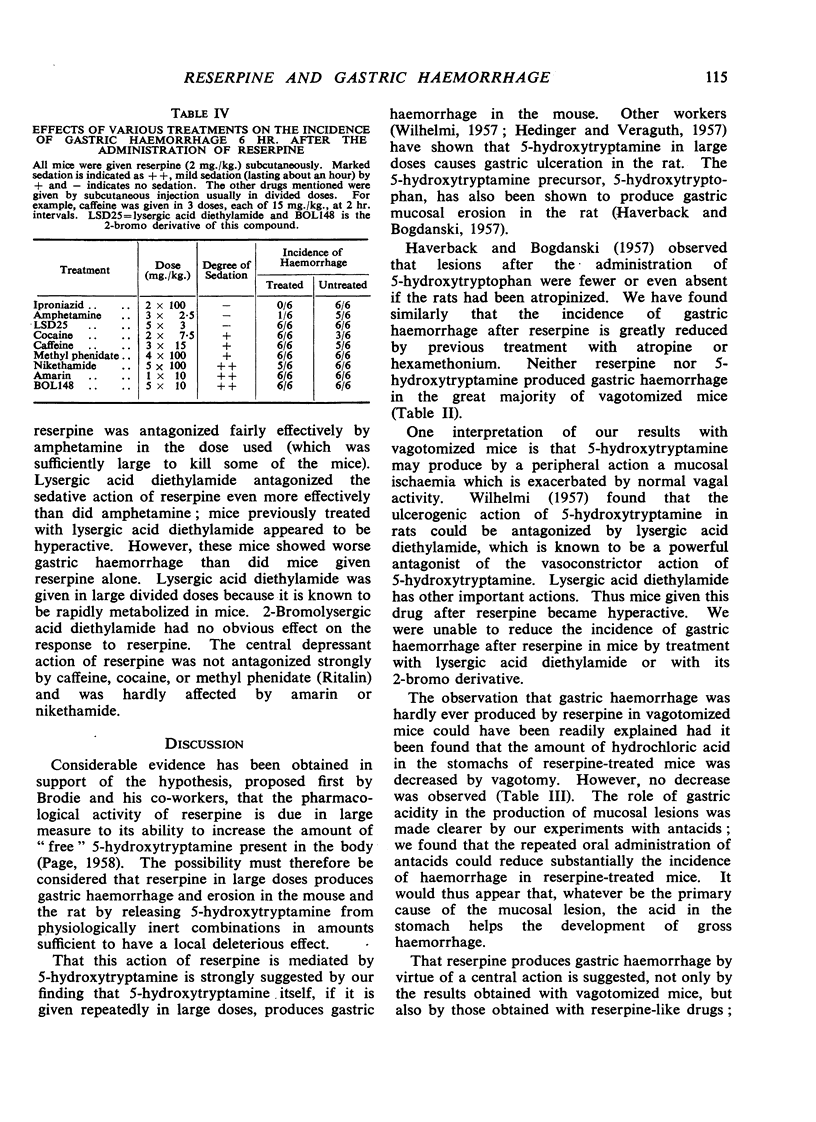
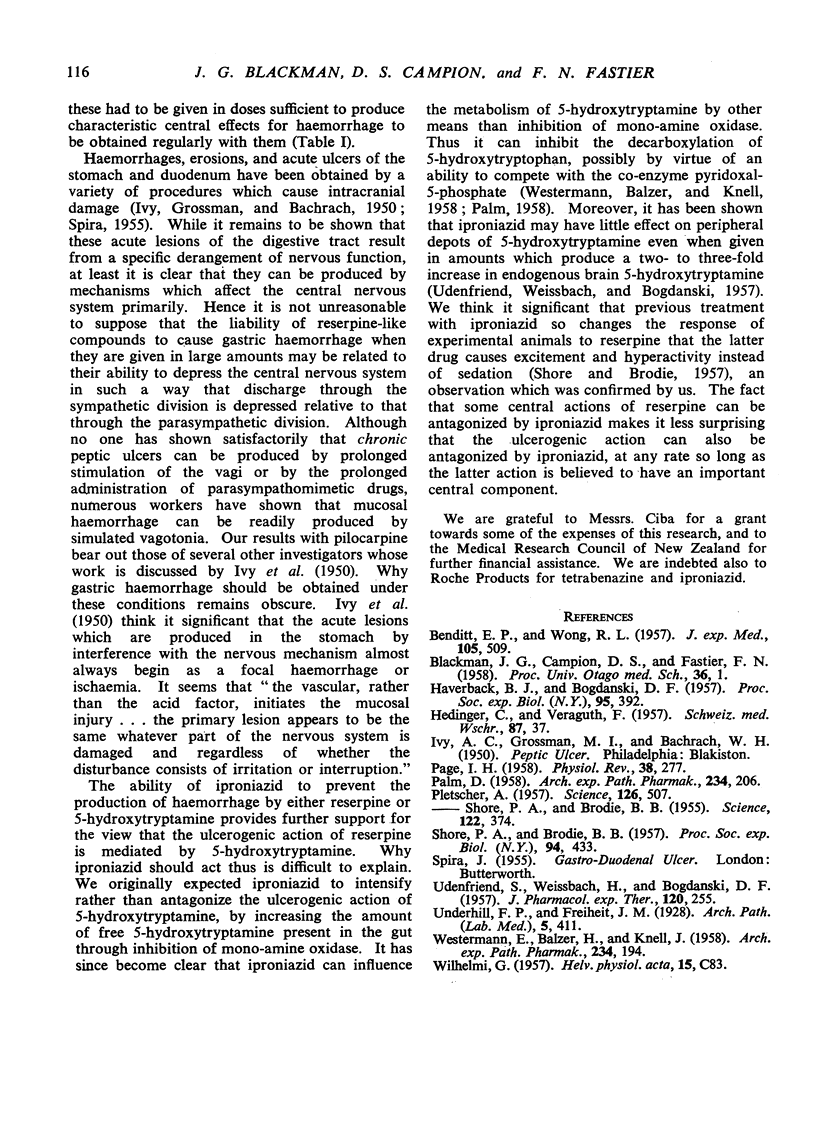
Selected References
These references are in PubMed. This may not be the complete list of references from this article.
- BAUMANN E. Gedanken zur Entwicklung des Anästhesiewesens in der Schweiz. Schweiz Med Wochenschr. 1957 Jan 12;87(2):37–39. [PubMed] [Google Scholar]
- BENDITT E. P., WONG R. L. On the concentration of 5-hydroxytryptamine in mammalian enterochromaffin cells and its release by reserpine. J Exp Med. 1957 Jun 1;105(6):509–520. doi: 10.1084/jem.105.6.509. [DOI] [PMC free article] [PubMed] [Google Scholar]
- HAVERBACK B. J., BOGDANSKI D. F. Gastric mucosal erosion in the rat following administration of the serotonin precursor, 5-hydroxytryptophan. Proc Soc Exp Biol Med. 1957 Jun;95(2):392–393. doi: 10.3181/00379727-95-23232. [DOI] [PubMed] [Google Scholar]
- PAGE I. H. Serotonin (5-hydroxytryptamine); the last four years. Physiol Rev. 1958 Apr;38(2):277–335. doi: 10.1152/physrev.1958.38.2.277. [DOI] [PubMed] [Google Scholar]
- PALM D. Uber die Hemmung der Dopa-Decarboxylase durch Isonicotinsäurehydrazid. Naunyn Schmiedebergs Arch Exp Pathol Pharmakol. 1958;234(3):206–209. [PubMed] [Google Scholar]
- PLETSCHER A. Release of 5-hydroxytryptamine by benzoquinolizine derivatives with sedative action. Science. 1957 Sep 13;126(3272):507–507. doi: 10.1126/science.126.3272.507. [DOI] [PubMed] [Google Scholar]
- PLETSCHER A., SHORE P. A., BRODIE B. B. Serotonin release as a possible mechanism of reserpine action. Science. 1955 Aug 26;122(3165):374–375. doi: 10.1126/science.122.3165.374. [DOI] [PubMed] [Google Scholar]
- SHORE P. A., BRODIE B. B. LSD-like effects elicited by reserpine in rabbits pretreated with iproniazid. Proc Soc Exp Biol Med. 1957 Mar;94(3):433–435. doi: 10.3181/00379727-94-22968. [DOI] [PubMed] [Google Scholar]
- UDENFRIEND S., WEISSBACH H., BOGDANSKI D. F. Effect of iproniazid on serotonin metabolism in vivo. J Pharmacol Exp Ther. 1957 Jun;120(2):255–260. [PubMed] [Google Scholar]
- WESTERMANN E., BALZER H., KNELL J. Hemmung der Serotoninbildung durch alpha-Methyl-Dopa. Naunyn Schmiedebergs Arch Exp Pathol Pharmakol. 1958;234(3):194–205. [PubMed] [Google Scholar]


